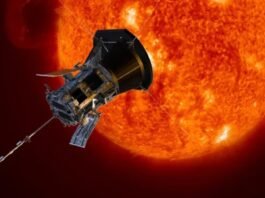NASA’s Europa Clipper mission is on monitor for its scheduled October 10 launch, aiming to discover Jupiter’s icy moon, Europa. Scientists consider Europa could possibly be one of the vital promising locations to seek out the circumstances for all times past Earth. The spacecraft will journey 1.8 billion miles (2.9 billion kilometres) to review whether or not the moon’s icy floor hides an unlimited ocean beneath, which might harbour the correct circumstances for all times. The mission, nevertheless, faces challenges as a result of intense radiation round Jupiter.
Mission preparations and potential challenges
NASA’s Europa Clipper will launch aboard a SpaceX Falcon Heavy rocket from Kennedy Space Center in Florida. Despite considerations over some faulty transistors on the spacecraft, the mission stays on schedule. The spacecraft will arrive at Jupiter in April 2030 and conduct 49 flybys of Europa, gathering scientific knowledge in regards to the moon’s setting.
Jordan Evans, Project Manager at NASA’s Jet Propulsion Laboratory (JPL), told Space.com that intense radiation round Jupiter is a big problem. The spacecraft will probably be uncovered to radiation ranges equal to thousands and thousands of chest X-rays throughout every flyby. The crew has developed a trajectory to minimise publicity, permitting the spacecraft to finish its mission and return priceless knowledge to Earth.
Investigating Europa’s icy shell and subsurface ocean
Europa Clipper will use its suite of scientific devices to estimate the thickness of Europa’s icy crust and examine its floor for indicators of geological exercise. Ann Allen, Deputy Project Scientist on the National Oceanographic and Atmospheric Administration (NOAA), defined that the spacecraft will seek for natural compounds, although it is not going to immediately seek for life. Instead, it is going to deal with discovering the substances that would make life attainable beneath the ice.
The mission is designed to final 4 years and will reveal necessary details about Europa’s subsurface ocean, setting the stage for future exploration.




